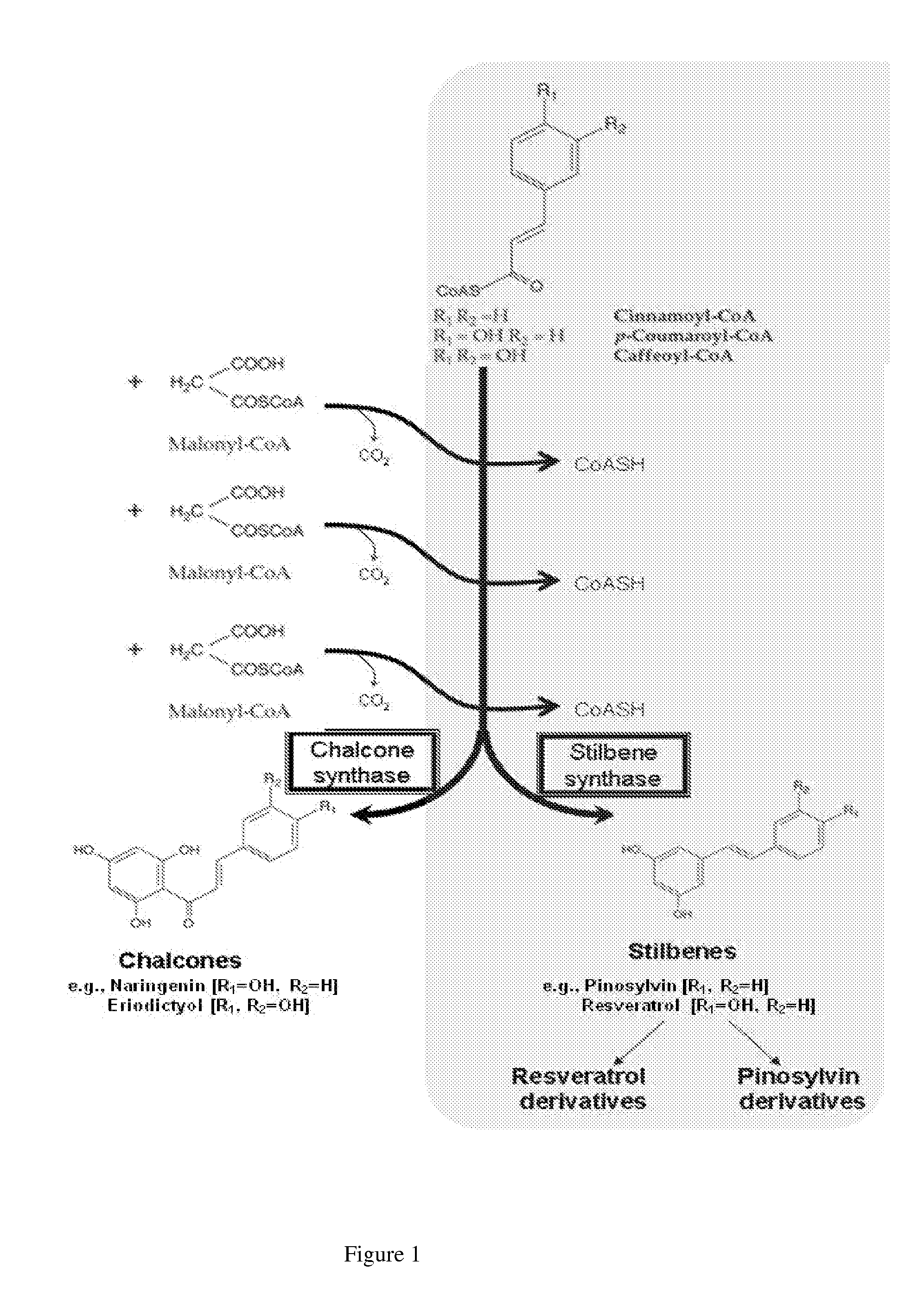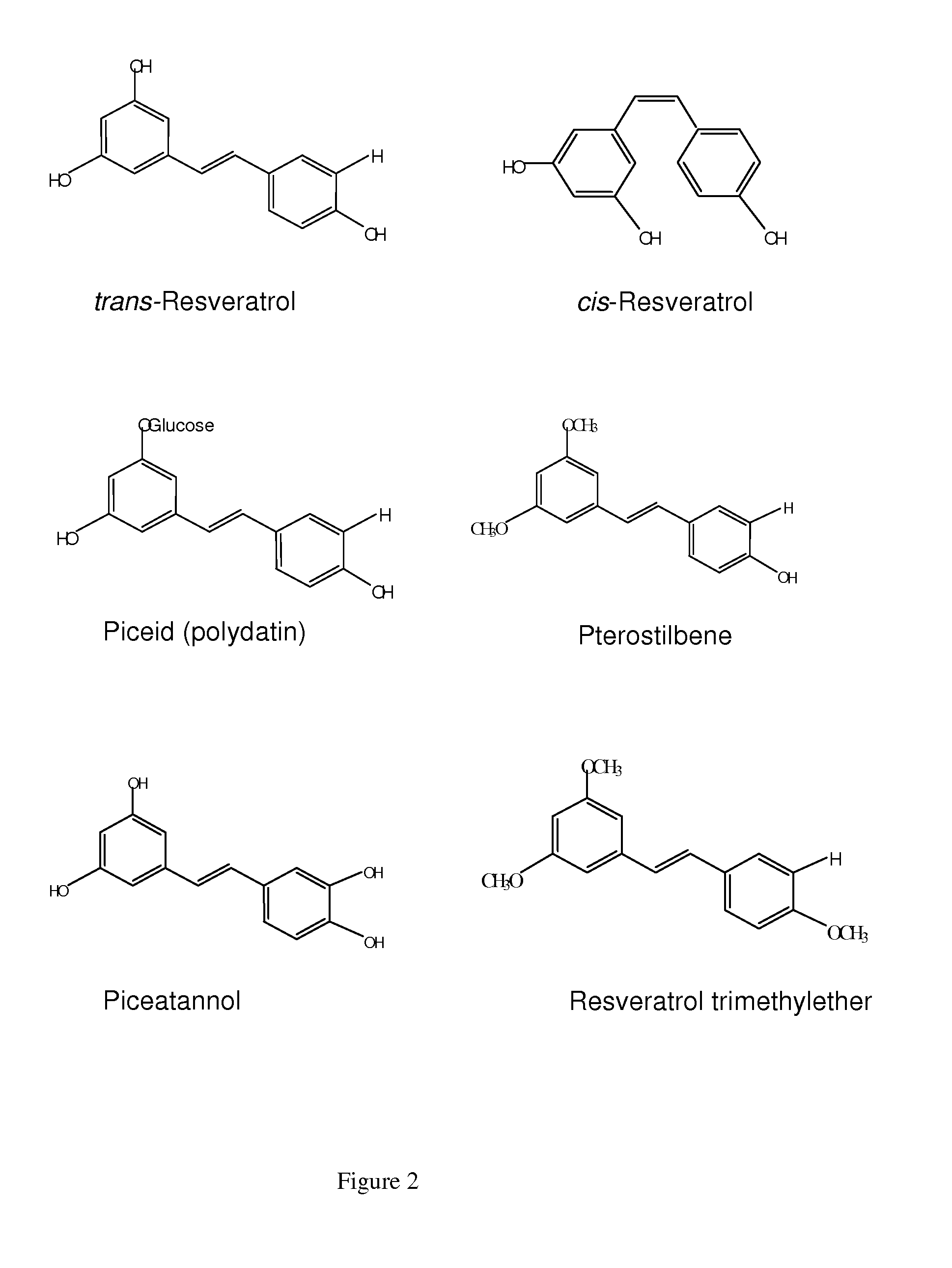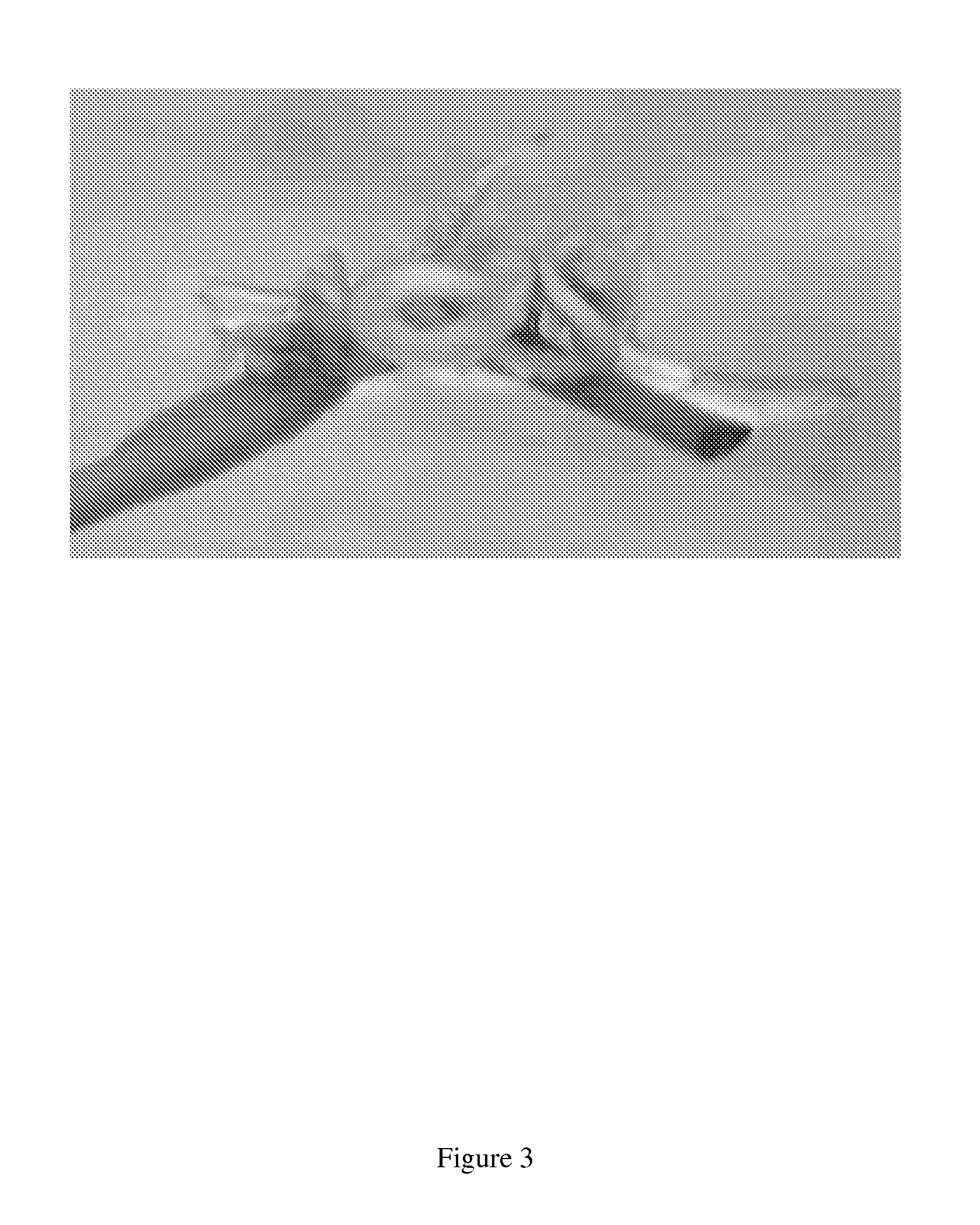Production of stilbenes in plant hairy root cultures and other root cultures
a technology of plant hair and stilbenes, which is applied in the field of production of stilbenes in plant hairy root cultures and other root cultures, can solve the problems of inefficient substrate utilization, high quality source of naturally-derived resveratrol and its many derivatives, and inability to be found on the commercial market. , to achieve the effect of increasing the amount of derivatives of stilbenes
- Summary
- Abstract
- Description
- Claims
- Application Information
AI Technical Summary
Benefits of technology
Problems solved by technology
Method used
Image
Examples
example 1
Producing Resveratrol and Resveratrol Derivatives from Peanuts Materials and Methods
[0056]Establishment of hairy root cultures. Seeds of peanuts (Arachis hypogaea) cvs. Andru II and Hull (kindly provided by Dr. Daniel Gorbet, University of Florida) were surface sterilized as follows. Seeds were presoaked for 2 minutes in sterile water containing 0.003% Ivory™ detergent; immersed for 15 minutes in sterilization solution (50% Clorox™, 0.003% Ivory™ detergent) and rinsed in sterile water. To minimize Chlorox™ damage to the embryo, the test was aseptically removed and seeds were further rinsed in two changes of sterile water over a 15 minute period. Disinfected seeds were placed individually on plates containing B5 medium to allow emergence of the radicle and to screen for viable healthy seedlings. Germinated seedlings were transferred to Magenta™ boxes containing B5 medium and allowed to grow in continuous light at 28° C. for 15 to 21 days. Explants used for hairy root production were ...
example 2
Production of Resveratrol and Resveratrol Derivatives in the Peanut Cultivar, Hull
[0080]Using the materials and methods outlined above, resveratrol and resveratrol derivatives were elicited in the peanut hairy roots derived from the Hull cultivar. Hairy root cultures were elicited for 24 hours with 10.2 mM sodium acetate and resveratrol and derivatives were extracted from the medium with ethyl acetate. Control roots were not elicited. See FIGS. 12 and 13. Elicted hairy root of peanut cv. Andru II (line pRYG-J) and cv. Hull (line 3) s were cultured in B5 medium. HPTLC analysis of resveratrol and derivatives is shown in the figure. Elicitation induced the production of resveratrol and derivatives. Analysis was done under UV light (254 and 365 nm).
example 3
Production of Resveratrol and Resveratrol Derivatives in Grape
[0081]Elicitation of resveratrol and derivatives in hairy roots of muscadine grape was achieved using the materials and methods outlined above. Cultures were elicited for 24 hours with 10.2 mM sodium acetate and resveratrol and derivatives were extracted from the medium with ethyl acetate. PCR analyses of hairy roots of muscadine grape (Vitis rotundifolia) cvs. Noble and Fry is shown in FIG. 14. Roots were analyzed for the presence of rol C and aux 2 genes. Hairy roots were cultured in B5 medium. HPTLC analysis of resveratrol and derivatives is shown in the figure indicating resveratrol and resveratrol glucosides. Resveratrol was observed in low levels in control non-elicited cultures. Analysis was done under UV light (365 nm).
PUM
| Property | Measurement | Unit |
|---|---|---|
| Fraction | aaaaa | aaaaa |
| Fraction | aaaaa | aaaaa |
| Fraction | aaaaa | aaaaa |
Abstract
Description
Claims
Application Information
 Login to View More
Login to View More - R&D
- Intellectual Property
- Life Sciences
- Materials
- Tech Scout
- Unparalleled Data Quality
- Higher Quality Content
- 60% Fewer Hallucinations
Browse by: Latest US Patents, China's latest patents, Technical Efficacy Thesaurus, Application Domain, Technology Topic, Popular Technical Reports.
© 2025 PatSnap. All rights reserved.Legal|Privacy policy|Modern Slavery Act Transparency Statement|Sitemap|About US| Contact US: help@patsnap.com



